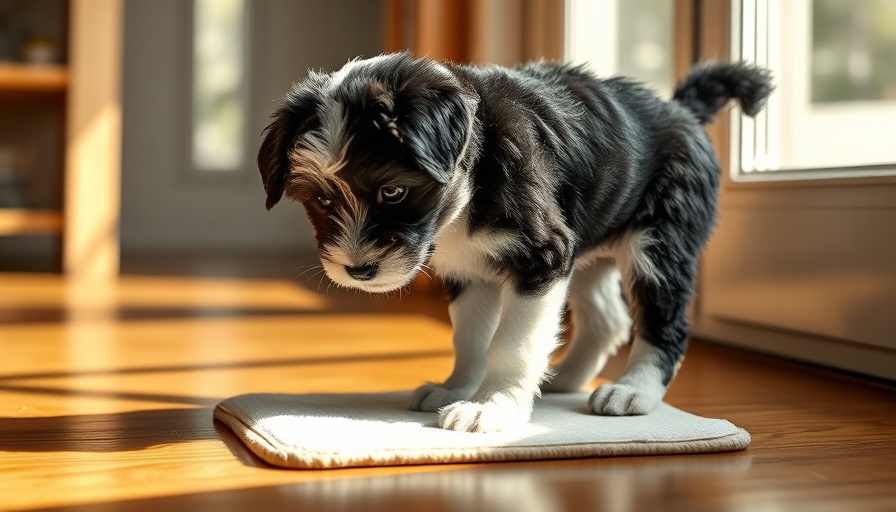
Mastering the Art of Pee Pad Training
For many dog owners, especially those living in urban settings or with senior dogs, pee pads can prove to be a lifesaver. While the concept of training your furry friend to use a pee pad may sound simple, it involves a series of thoughtful steps that cater to the specific needs of both puppies and adult dogs. Understanding the nuances of this training can make a significant difference in your journey with your beloved pet.
Understanding the Benefits of Pee Pads
Pee pads offer a flexible solution for dog owners managing the challenges of urban living or caring for older pets with bladders that might not hold as well as they once did. For instance, small breeds often require more frequent bathroom breaks, making pee pads a practical choice.
Moreover, pee pads can provide a dedicated space for your dog to relieve themselves, reducing the likelihood of accidents around the house. This is especially helpful for those who might grapple with mobility issues due to age or health conditions. By facilitating a dependable bathroom area, these pads can enhance the overall happiness and comfort of both the dog and the owner.
Step-by-Step Guide to Train Your Puppy
Training a puppy to use a pee pad can be a joyful experience filled with learning moments. The process begins by setting up a designated area that includes both a space for relaxation and the pee pad itself. Keeping your puppy supervised is key; ensure they learn to associate the pad with their potty needs.
When you see your puppy beginning to relieve themselves on the pad, it’s essential to promptly reward this behavior with praise or treats. This positive reinforcement helps solidify the connection between the act and the reward in your puppy’s mind. Over time, they will start to understand, and consistency is pivotal in this phase.
Maintaining Patience and Positivity
Training takes time, and as a dog owner, it's crucial to exhibit patience. Mistakes will happen, and how you respond can drastically affect your dog’s learning experience. Rather than reprimanding your dog for accidents, gently guide them back to the pad, reinforcing their efforts when they come close. This method prevents stress and fosters a positive environment.
Adapting Training for Adult Dogs
For adult dogs who may need retraining to accommodate pee pads, the approach differs slightly. These dogs often require more empathy and understanding since they might be accustomed to different routines. The first step in retraining is to assess their past habits. Where are the common potty accident spots? Moving the pads closer to these areas at first can create familiarity and comfort for the dog as they adjust to the new routine.
As you retrain, establishing a routine where the adult dog feels comfortable and secure is essential. Repetitive reinforcement is beneficial too. Every successful attempt should be met with a treat or verbal praise, promoting an aura of encouragement.
Accidents Happen, and That's Okay!
It’s imperative to remember that accidents are an expected part of the training process. Each misstep can serve as a valuable learning opportunity, reinforcing the idea that patience is paramount. By moving the pad closer to where accidents frequently occur and rewarding those near misses, you can redirect your dog’s behavior towards more successful potty habits.
Creating a Relaxing Space
When setting up the training area, ensure it is a calming environment. Dogs, much like humans, can feel stress, especially in new situations. Incorporate comforting elements such as soft blankets or favorite toys to create an inviting bathroom space.
The emotional environment matters. When dogs feel secure in their designated bathroom area, it becomes easier for them to instinctively return to the pad when the need arises.
Conclusion: Nurturing Connection Through Training
As you embark on this journey of pee pad training, remember that it is not merely about teaching your dog a new habit; it's about strengthening the bond you share with them. By providing love, understanding, and consistent guidance, you can ensure that this training process is both successful and enriching. So, as you work to navigate the sometimes challenging waters of dog training, embrace the small victories, and most importantly, have fun!
Ready to take your training a step further? Explore local dog training classes or seek out resources dedicated to canine behavior for deeper insights. Your furry friend deserves the best, and you have the tools at your disposal to make this journey a successful one!
 Add Row
Add Row  Add
Add 




Write A Comment